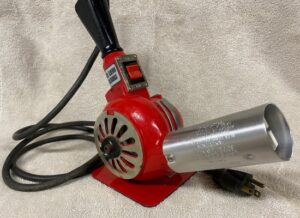 One of the worst case scenarios is when the client’s equipment budget expectations and reality are not one-and-the-same. I had one of those recently.
One of the worst case scenarios is when the client’s equipment budget expectations and reality are not one-and-the-same. I had one of those recently.
We look at some of this equipment they’re considering and think, “Bargain Bin.” You know, like those $5.00 DVDs movies found in the round bins at the Big Box store with titles that no one has ever heard of? There are no Oscar winners in that bin. I guess there’s a reason those bins are round. At $5.00, they’re a throw away if they’re no good.
Where do these budget numbers come from? If our clients and end users do some cursory surfing on the ‘Net, it’s amazing the things you’ll find for so little money. I did a generic search for “conference room microphone” and up pops a $27.99 speakerphone as well as a $89.99 conferencing microphone that’s advertised for “8-10 people” on a popular buying website.
This is what our clients see in front of them every day when they surf the ‘Net for information. I’ve even received product links with the question, “Do you have this equivalent?” Before I respond with what I’m thinking, I remind myself that the client often doesn’t know that there is a difference. It says, “professional” in the product description, right? (If it says, “professional” that’s usually my first clue that it’s not).
As an example, back in November of 2022, Recon Research published a comparison matrix of features and functions of 120 USB podcast mics.
The least expensive I saw on the list had a MSRP of $22.99 and the manufacturer listed it as a “Professional USB Studio Condenser Microphone for Chatting.” $22.99. That’s less money than a large pizza with a side order of breadsticks. For a few dollars more, you could get the next model up that also featured LED lights. You can guess the website.
There are a lot of USB mics listed in Recon’s matrix for around $99.00 MSRP and there’s some pretty cool mics that start at a bit over a C-Note up to around $199.00. I would not hesitate to suggest some of those to a client for a podcast and admittedly, I’m an audio snob.
I have colleagues that purchased some inexpensive podcast mic/boom arm/pop filter bundles from that popular buying website. Results have varied. Some threw out the mic because it was so awful. Another threw out the boom because it wouldn’t support a real microphone.
May I suggest a different way to reduce your carbon footprint?
Buy quality. It could be quality products or quality services. Either way, buy something only once.
Have you considered the costs associated with a lack of quality? Time to research, order, receive and set up. Time to use and evaluate and discover the deficiencies. Time to decommission and dispose. Time to re-research, re-order, re-receive, re-set up, and reevaluate. Where did all that time come from and who pays for it? It comes from productivity and profit. Mistakes and failures are costly. If you follow the acquisition flow above, it took about three times as long to get something that actually worked when price is the only consideration.
 My neighbors had a yard sale recently, and amongst the treasures was an older Master Appliance heat gun. It was missing the base and the nozzle was a little beat up. I snatched it up right away. Why? Because I knew I could order replacement parts like bases, elements, switches, and more. It is not a throwaway product. It’s a quality product that you can keep running for decades, because if something does need attention, parts can be obtained, the unit fixed and put back into daily service easily.
My neighbors had a yard sale recently, and amongst the treasures was an older Master Appliance heat gun. It was missing the base and the nozzle was a little beat up. I snatched it up right away. Why? Because I knew I could order replacement parts like bases, elements, switches, and more. It is not a throwaway product. It’s a quality product that you can keep running for decades, because if something does need attention, parts can be obtained, the unit fixed and put back into daily service easily.
How many $22 microphones and cheap boom arms do you think have been thrown away? How is that sustainable? Buying cheap junk is a waste. It is a waste of raw materials, energy, and labor to manufacture, fuels and materials to ship, heat, and A/C as it takes up room in a warehouse, labor to unload, inventory, pack, and ship. Time to unbox, set up, and discover that it’s less desirable than a rusted Yugo. Plus, now you have to go through the research and buying process all over again. What are we thinking when we shop in the bargain bin? “If it’s no good, I’ll just throw it away.” This is not a sustainable mentality. The throwaway society with single-use disposable items came into vogue in the 1950s. Here we are seven decades hence and we’re doing it again – but this time it’s not plastic utensils and paper plates. The materials are now much more costly and sometimes even toxic.
You and I have purchased a lot of microphones over the years, and some of us have collected some classics. Real microphones cost real money and I still have a couple I want on my bucket list. No one will be dropping a mic in my house without incurring severe monetary penalties. But microphones are only a part of our industry. Quality audio-visual equipment costs real money, and a system needs to be professionally designed, engineered, installed, tuned, commissioned, and placed in a space that also considers environmental and ergonomic factors so that it will provide the end users with many good years of faithful reliability while delivering quality results.
As audiovisual practitioners, we look for products that we know are offered by reputable manufacturers, fit the client’s need, work within a reasonable budget, and will serve the client and end user well for many years to come.
If you are at all uncertain about equipment decisions and/or needing design, CAD, programming, or installation assistance, we have an entire team that can help you make the appropriate quality choices given the need and budget. None of those options will include a $22.00 microphone.
Want to know more? Check out Tom’s “Project Questions & Needs Analysis” post.
Did you find this post helpful? Engage with us over on LinkedIn.










